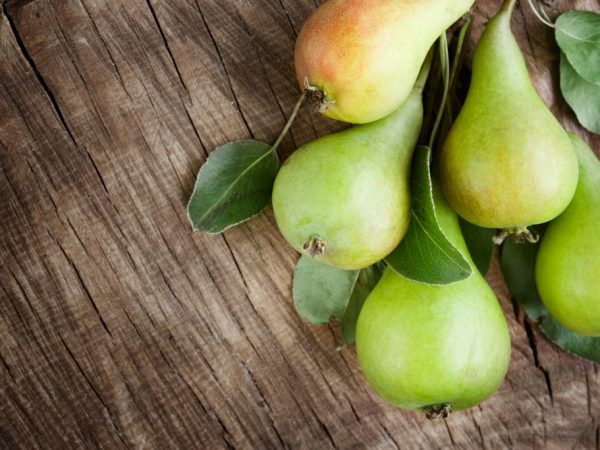Description of pear varieties Dukhmyanaya
Dukhmyanaya pear is a high-yielding culture. It is unpretentious to care for, resistant to temperature extremes and is planted in regions with frosty winters. The variety is not threatened by common diseases of horticultural crops (such as scab).

Description of pear varieties Dukhmyanaya
Characteristics of the variety
The Dukhmyanaya variety is a tall tree. The maximum height of the pillar is reached in the first year, after which the tree grows with side branches. The late summer culture is characterized by a mixed type of fruiting.
The culture owes its qualities to the frost-resistant variety Aleksandrovka.
The first fruits appear on the tree in the 4th year of active growth. Average yield: 20 tons per 1 ha. Winter resistance is average, and with additional shelter, the culture survives long frosts. Used as a shelter for peat or compost.
Description of the tree
Dukhmyanaya pear grows quickly if favorable conditions are created. The pear needs space, otherwise the branches break quickly. The tree blooms with white inflorescences that densely cover the branches.
According to the description, the height of the tree is 5-6 m. The crown is dense, the leaves are dark green. The surface of the plate is glossy. The shape of the leaves is rounded, slightly elongated.
The pear is prized for its taste. The pulp of the pear is white, juicy and moderately oily. The aroma of the fruit is average, and the taste is sweet and sour. The peel is green, closer to the time of ripening it turns yellow (a characteristic blush appears).
The fruits do not deteriorate for a long time, so they can be transported and stored in a dark, cool room.
Landing rules
When choosing a place for planting a seedling, the light regime should be taken into account. Spiritual pear is planted in a well-lit area, but even in the shade, with proper care, it can grow well. The leaves of the tree are undemanding to light, and the fruits ripen by the end of summer. The tree needs sunlight only during flowering, so you cannot make permanent shelters for the culture.
A one-year or two-year-old seedling is planted.
Soil requirements:
- loose structure;
- well drained;
- with good flow capacity (water will not stagnate and lead to root rot).
After choosing the location, a landing pit is dug. Fertilizers are applied to it. When planting, the root collar of the seedling should be 3-4 cm higher than the soil level. The seedling is sprinkled with soil and watered abundantly (at least 4 buckets of water).
Pollination system
Neighborhood for pears is also important. A self-fertile cultivar needs good pollinators nearby. It is ineffective to plant a crop on an open desert land plot (tree yield is low). Good neighborhood for culture - pears Just Maria or Lagodnaya.
Plant care

Remember to fertilize the tree
An adult tree, which has begun to bear fruit, needs most care. For the first 4 years, the seedling is watered, and the soil in the root layer is loosened. To stimulate the growth of a young tree, you cannot fill it in - an excess of water will lead to decay of the roots.The ripening period for the variety is late, therefore, the pear needs especially intensive watering in the summer. The soil is watered as it dries up (a solid soil clod is formed).
Fertilizers are applied from the 4th year. Organic fertilizers are used every 2 years. Potash fertilizers are applied every season. Pruning is important for a tree. It is carried out in early spring before the first ovaries appear. Old, dry or broken branches are pruned. The cut sites are treated with a disinfectant solution.
Common diseases
According to the description, the culture is scab resistant, but can suffer from other fungal diseases.
Wood is susceptible to rust. It is a disease that spreads rapidly between horticultural crops. The spores of the fungus can be transmitted from the apple tree or other trees growing near the pear. A neglected disease is characterized by damage to shoots, leaves and fruits.
Fight disease
To combat rust, timely prevention is needed: in early spring, the tree is sprayed with chemical solutions. Bordeaux liquid and lime broth are used.
Sulfur preparations help to cope with pear disease (used when the tree is already sick). Purchased funds also show good results: "Horus" or "Topozom". If the disease spreads quickly, pruning of diseased branches is urgently needed. So it will be possible to stop the disease. You cannot harvest from a tree that continues to hurt.
Conclusion
Dukhmyanaya pear is a popular garden culture. She is unpretentious in care. The first crop can be harvested in the 4th year. From this period, constant care is carried out, which consists in watering, fertilizing the soil and cutting off excess branches. Pear is treated for rust (fungus) by spraying. Timely prevention will prevent a dangerous illness.


